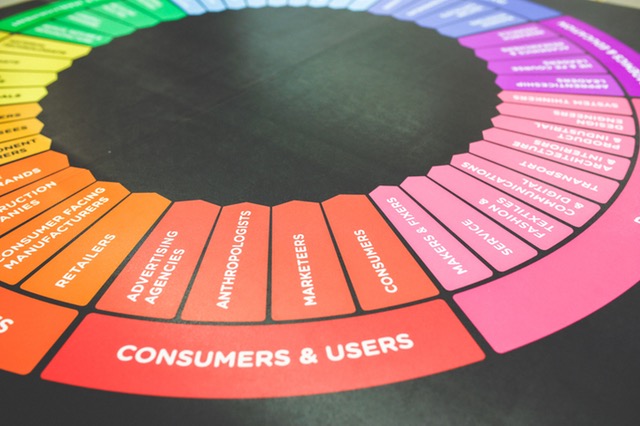When it comes to brand awareness, nothing beats a well-thought-out, well-executed content marketing strategy. However, you don’t have to wait for people to come to you. What you need is a system that puts you right in front of your intended audience in the most efficient and cost-effective way possible.
Content is king, no doubt. But with more than 500 million blogs and a new blog post published every 0.5 seconds, it’s almost impossible to build an audience on Google if you’re not among the few established companies and authority sites dealing on a certain topic. In fact, many businesses that rely heavily on website traffic took a beating after Google started implementing some major updates.
We’ve seen this coming a few years back, and we’ve perfected a system that helps small business owners grow their audience more rapidly without slugging it out with the ‘big guys.’ We’ve learned through experience, after working with over 700 clients, to combine different methods of customer engagement that allows them to attract the right people and keep them coming back.
Create a following on social media
Content marketers would often tell you to just create awesome content and let Google take care of the rest. However, things have changed and it’s no longer just putting out great content, but becoming pro-active in getting the right people to see your content.
1. Facebook & Twitter
No, we’re not selling to people on Facebook or Twitter. We’re here to make connections. Sure, you can buy some ads to give your post a temporary boost, but the main purpose is building that relationship and trust with people who might be a customer or a business partner.
Here’s a great thing about social media. You don’t have to be an ‘authority’ (or sound like one) to get an audience. You just have to use Facebook & Twitter the way they’re supposed to work but with a clear purpose in mind – to get more people into your business.
Show people what you do with your business, share some thoughts, some interesting articles or videos. Interact with users. Better yet, if you have your own blog or website, you can share your featured posts or repurpose old content for social media (e.g. quick tips, testimonials, etc.).
Ideally, you want to have a system already in place before going in on social media. People often make the mistake of going in and not being able to handle it right. So they end up either spending too much time doing everything by hand or sending bulk messages that are too generic to create meaningful connections.
Think of social media as your springboard. It helps you start a conversation but you’ll need to follow up on them and move to a more ‘stable’ platform like your email list as you go by.
We’ve developed our own sales and marketing automation which enables you to collect data and keep track of your conversations on social media. It’s a complete system that comes with a landing page builder, sales funnels, autoresponders and many others.
2. LinkedIn
We’ve devoted an entire blog article on this topic about how to use LinkedIn at networking events to increase sales. It’s the same idea with Facebook & Twitter, but we’re looking to find business partners, preferably those which are complementary to yours. Hence, if you’re a restaurant or catering business, you’ll probably want to partner up with event planners in your area.
We recommend having your own blog or website before looking out for potential business partners on LinkedIn. It creates a bit of impression. Like being able to write your own book, people tend to trust you more with your knowledge and experience when they see your blog or website.
Quality content still reigns supreme, but you need the right tools to get them to the right people – precisely what our system does for many small business owners like you.
3. YouTube
Videos will take center stage as technology improves and the majority of online marketers migrate to a much less competitive space. Unlike Google, YouTube is an untapped goldmine for a lot of content marketers. You don’t need a professional studio or expensive video editing software to get a thousand viewers on your channel.
Think of all the YouTube videos you’ve watched with more than ten thousand viewers and subscribers, using nothing more than an inexpensive camera, a whiteboard, or just them talking to you through their smartphones. Even if you’re a little bit “camera-shy,” you can still build a massive following using whiteboard animation software like VideoScribe and Doodly or even a slideshow made from Pixabay images with your voiceover.
Now here’s the best part. Your audience will get notified each time you have a new post by simply clicking on that bell notification icon. And, unlike a static post or webpage, your YouTube videos will continue to get more viewers, comments, and more people will subscribe to your channel long after you’ve published your videos.
Just like your Facebook and other social media platforms you’ll be able to use your YouTube content to get them to your site and keep them coming back for more.
Collect data for your sales and marketing automation
All your content marketing efforts and social media posts should all come down to this – collecting data for your sales and marketing automation. This is where most small businesses hit a dead end. They don’t know what to do with next, or they don’t have a system to capture all the data and use them to turn followers and subscribers into buying customers.
Small Business Dream offers a solution to take your fans and followers into that journey, whether it’s through sales funnels, landing pages, newsletters, drip mail, email series, and push notifications. We’ve covered every possible way to keep them interested after doing all the work of creating great content for your business.
Conclusion
Content marketing doesn’t require a lot of resources aside from your time and creativity. Like any other skill set, you’ll get better with practice and gaining more experience. However, not all business owners have the time and commitment to produce high-quality content. We offer services which includes online and offline solutions to drive your message home.
If you need help, you can reach us and take advantage of our FREE Sales and Profitability consultation where we identify key aspects in your business to rapidly boost your sales. Come visit us at www.smallbizdream.com to learn more about our 5-step system to rapidly grow your sales and profits with less stress.





